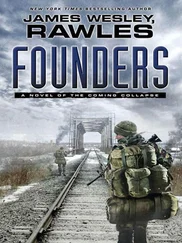They bobbed at the surface for a few minutes, to adjust the buoyancy of both the rubber bags containing the limpet mines and their own dive vests. At first the bags were too heavy and were dragging them down, but some squirts of air from their regulators into the bags soon brought them to neutral buoyancy. Then their dive vests gave them too much buoyancy, so they had to bleed air to get them back to neutral buoyancy. (This was the same procedure that they had used when adjusting the buoyancy of their camera and gear bags during sport dives.) They hadn’t had the time to do a trial run with the limpet mine bags, and spending this much time on the surface now made them wish that they had.
They swam toward the ships at a depth of ten feet, welcoming the warmth from working their muscles in the chilly water. The leader popped his head above the surface for a moment to catch sight of the ships, then ducked back under and motioned with his arm, showing the others the correct bearing to follow. He held that position while the other three men consulted their wrist compasses and spun their outer bezels to set a rough azimuth for their directional arrows.
Swimming underwater to the ships and attaching the limpets was strenuous, but within the capabilities of the divers. Because they were nervous, they were all sucking air from their tanks faster than they would on a recreational dive. They each carried three limpet mines. All twelve mines already had their timers preset.
As they approached the ships, by prearrangement they diverged into two teams. The visibility was thirty feet, which was above average for the Burke Channel. One member of each team had to surface briefly to reestablish their bearings. Pressing on with only their wrist compasses to guide them, both teams had the enormous bulk of their target ships loom into sight after fifteen minutes of hard swimming. They had been told to attach the limpets at least six feet below the waterline. They opted for fifteen feet to reduce the chance that they might be spotted. The mines were magnetically attached directly over welded seams, at twenty-foot intervals. Each attachment made an audible clunking sound, and this worried the divers. Once the last mine was removed from each bag, they drained all of the remaining air and let them sink down into the depths.
Swimming under the keels of the ships, the two teams set their compasses for due north. They checked their compasses and wristwatches regularly. They were still anxious and going through their air supply quickly.
Two of their air tanks ran low when they were still two hundred yards from shore, so two of the divers had to clip into octopus rigs and share air, swimming side by side. Then they all ran low and one tank ran out completely. Their only option was to begin porpoising, surfacing once every twenty feet to breathe through their snorkels for the final eighty yards of their swim. They all reached the shore within seconds of each other and checked their watches.
There were still eleven minutes until the fireworks. Transitioning to just their cold-water neoprene booties, they rapidly walked uphill toward their planned rendezvous point, a location that was memorized but intentionally left unmarked on their maps.
Thirty seconds before the scheduled detonation they began to quietly but gleefully count down out loud in unison as they walked. At ten seconds before the detonation, they stopped at a clearing in the trees and looked back toward the bay. They sat down side by side and continued counting down, in their quiet chant. Right on schedule, they saw white gouts of foam jumping up the far sides of both ships. A few seconds later, they heard the dull thud of the simultaneous explosions. They sat, enthralled. They cupped their hands over their eyebrows, watching for signs of distress from the ships. Faintly, they heard some sort of klaxon. After two minutes, both ships had perceptibly begun to list on the sides where the limpets had been attached. And after five minutes, the ships were both listing at least forty degrees. Tony—their leader—said dryly, “They’re done. Let’s go.” They resumed their hike, feeling invigorated. One of their local resistance contacts was waiting for them at the rendezvous point.
The four divers were all given the boots and bundles of clothes that had been handed off the day before. Their air tanks, regulators, masks, fins, weight belts, and other gear were buried in a large hole that their contact had dug earlier in the day. As they were refilling the hole, the four men downed Endurox liquid meal supplements—the same drink that they used after Ironman races. They had been saving their last few of these for a physically challenging day like this. Tony raised his in a toast and said, in a fake heavy French accent, “ Vive la resistance! ” and they all laughed.
They had timed their detonators for 9:45 P.M., just as the ferry was scheduled to depart, so that there would be no doubt that both ships would still be in deep water. The limpets were state of the art, from U.S. Navy UDT war reserve stocks, smuggled into Vancouver nearly a year in advance. The plastic-cased platter-shaped devices weighed seven pounds each and contained four and a half pounds of RDX explosive. (The magnets used for attachment took up most of the rest of their weight.) Their digital timers could be set to detonate up to 999 hours in advance.
When the limpets had first arrived, the logistics cell commander had questioned their potential use before setting them aside for terrestrial sabotage. But quite soon, they realized their intended maritime purpose. The limpet mines were smuggled to Bella Coola on a succession of fishing boat transits.
The team of divers was shuttled up to Bella Coola only forty-eight hours after intelligence of the planned RO-RO ship diversion was received. Their 620-mile drive took just over thirteen hours. The four men and all of their diving gear were crammed into an aging Dodge camper van. Their cover story was that they intended to conduct a series of hydropower dam inspection dives. Otherwise they had no justifiable excuse for the length of their journey or the presence of their dive gear. The only guns that they carried were two revolvers, both hidden behind a panel in the van. Luckily they encountered only one UNPROFOR roadblock, where they were simply waved through.
Their dive was carefully timed to coincide with the outgoing tide on their approach to the ships, twenty minutes of slack tide for their close approach and attaching the mines, and then the incoming tide to hasten their swim to shore.
• • •
After the sinking of the two ships, the four-man diving team had to go into hiding and wait two weeks before making their journey home to Vancouver. With dozens of roadblocks set up in the region, they had to make arrangements to get back to Vancouver by sea. This required the cooperation of five fishing boat skippers, who passed them “down the chain” to Campbell River, and finally Vancouver. In the aftermath, a rumor circulated that it was an American SEAL team that had sunk the ships.
After the sinking of the RO-RO ships, the occupation forces viciously clamped down on British Columbia. More checkpoints were established, and raids on suspected resistance safe houses increased. Most of these were the homes of innocent civilians with no connection to the resistance. Brutal acts of reprisal were carried out. Anyone who was a known scuba diver had his home searched, and dozens were arrested, interrogated, and even tortured.
• • •
The greatest fear of the resistance was the French helicopters. When paired with passive forward-looking infrared (FLIR) technology, they provided a formidable guerilla-hunting platform.
Читать дальше












